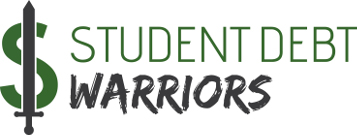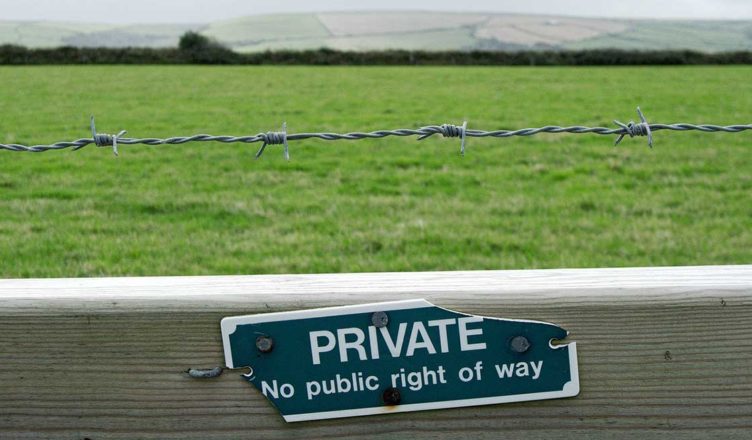This post may include affiliate links. Please read the disclosure at the bottom of our “About” page to learn more about our affiliate program.
Many high school students who dream of going to college don’t have a college fund or scholarship to help them pay for their education once they get accepted. For them, student loans are an essential piece of the college puzzle.
But student loans are also extremely complicated, coming in multiple varieties, each with its own unique set of rules. That confusion, paired with an urgency to find money so they can pay for college, often leads students and their parents to make costly mistakes. One of the costliest? Not understanding the differences between federal and private student loans.
Need help keeping track of your student loans? Download our free Student Loan Spreadsheet!
Below, we discuss the major differences between federal and private student loans so that you can better understand your options and make the smartest decision when figuring out how to pay for college.
Differences Between Federal and Private Student Loans
1. The Lender
This one is probably obvious, but it deserves to be said: If you borrow federal student loans, you are borrowing money directly from the federal government through a program that is managed by the U.S. Department of Education.
Because there are so many new student loans created each year, the federal government cannot possibly manage all of them on its own, so it works with a number of other companies—called student loan servicers—to manage the loans for it. This is who you will make your monthly student loan payments to, as well as who you can turn to if you have any questions about your student loans.
Currently, there are 10 student loan servicers:
- Nelnet
- Great Lakes Educational Services
- Navient
- FedLoan Servicing (PHEAA)
- MOHELA
- HESC/EdFinancial
- CornerStone
- Granite State – GSMR
- OSLA Servicing
- Debt Management and Collections System
Private student loans are, on the other hand, lent to borrowers by private institutions (usually banks, credit unions, and some online lenders). Though there are many private lenders, some of the big ones include:
- Sallie Mae/Navient
- Discover
- PNC
- College Ave
- SunTrust
- WellsFargo
2. The Interest Rate
Generally speaking, federal student loans will carry a lower interest rate than private student loans. Interest rates on federal student loans are fixed, meaning they won’t change over the course of the loan, and are set by law by the U.S. Congress. Current interest rates for federal loans disbursed on or after July 1, 2018, are:
- 5.05% for Direct Loans for Undergraduates
- 6.6% for Direct Loans for Graduate or Professional Students
- 7.6% for Direct PLUS Loans for Parents, Graduates, and Professional Students
On the other hand, private student loans typically charge much higher interest rates. This is due to a number of factors, but the most important of these is the fact that the lender is a private company. This means that they are unrestrained by law, and can charge as much as they need or want to in order to make a profit. Unlike federal student loans, private student loans may be variable or fixed rate, so be sure you know what you are agreeing to before you sign.
3. How Much You Can Borrow
When it comes to federal student loans, how much you can borrow will be determined by the information you provide in your FAFSA application, as established by law. That said, the maximum amount that you can borrow each year will range from:
- Undergraduate students: Between $5,500 and $12,500 per year
- Graduate and Professional students: Up to $20,500 each year
- Parents: Up to the remainder of your child’s tuition (not covered by their other aid)
Private lenders will often allow students to borrow well beyond this federal cap. That said, most private lenders so still have a maximum amount that they will allow you to borrow. This maximum is put in place to ensure that potential borrowers do not take out more debt than they can realistically pay back.
4. Subsidies
Borrowers who demonstrate high need on their FAFSA application may be entitled to receive subsidized student loans from the federal government. These loans do not accrue interest while you are a student or any time the loan is placed in deferment—a powerful benefit, which can help you save thousands of dollars over the life of your loan.
There is no equivalent to this in the world of private student loans. If you borrow your student loans through a private lender, interest will begin accruing immediately.
5. Eligibility
In order to receive federal student loans, you must submit your FAFSA application each year for which you are requesting aid. This application is designed to ensure you meet basic eligibility requirements, as well as to gauge your level of need. Basic eligibility requirements that you must meet to receive federal loans (and other aid) include:
- Demonstrating need
- Being a U.S. citizen or eligible noncitizen
- Having a valid Social Security Number
- Being registered with the Selective Service
- Being enrolled as a student
- Maintaining your grades
One thing that’s missing? A credit check. Generally speaking, you do not need to pass a credit check or have a healthy credit history in order to qualify for federal student loans. Borrowers of PLUS loans may need to submit a credit check, but even those individuals with poor credit score may still qualify for loans.
Private student loan lenders typically require the same eligibility requirements as the federal government. But private lenders will always require a credit check: Fair or not, that’s how they gauge how likely a borrower is to successfully repay their loan. If you don’t have much of a credit history (like most high school students) then you will likely need to apply for your loan with a cosigner in order to qualify.
6. Your Repayment Options
By law, if you borrow federal student loans, you are entitled to a variety of repayment options that are designed to help borrowers successfully repay their loans and avoid default. These include both standard options as well as income-based repayment plans:
- Standard Repayment
- Graduated Repayment
- Extended Repayment
- Revised Pay As You Earn (REPAYE)
- Pay As You Earn (PAYE)
- Income-Based Repayment (IBR)
- Income-Contingent Repayment (ICR)
- Income-Sensitive Repayment
Private student loan lenders, on the other hand, are not required to offer multiple repayment options to borrowers. Some private lenders do offer multiple repayment options that borrowers can choose from, but they almost certainly will offer fewer options than what is available for federal loans.
7. Forgiveness Options
Federal student loans come with a number of powerful benefits and borrower protections. One such protection is the possibility for forgiveness and discharge, though you typically must meet very specific conditions in order to qualify. These conditions are often tied to either working a certain number of years in public service, or by making a certain number of payments according to an income-driven repayment plan.
Private lenders do not typically offer forgiveness of student loans, though some lenders may under very specific circumstances (such as the death of a borrower). That said, this will depend entirely on the lender.
8. Ability to Postpone Payments
If you borrow federal student loans and are experiencing hardship (such as through temporary disability or unemployment), you are entitled to postpone your monthly payments for a certain period of time so long as you meet certain eligibility requirements. This is done through either deferment or forbearance, two related—but different—processes.
There is no requirement for private lenders to offer deferment or forbearance to borrowers, although some lenders (particularly newer online lenders) do offer some types of temporary forbearance in the event that a borrower loses their job or goes back to school.
9. When Payments Are Due
Borrowers of federal student loans are not required to begin making monthly payments until their grace period ends 6 months after graduation (or 6 months after leaving school, even if you don’t graduate). If you are able to make payments while enrolled in school, it’s a good idea to do so, as this has the potential of saving you thousands of dollars in interest capitalization. But it isn’t a requirement.
Private lenders are not required to offer a grace period and can require you begin making payments even while a student. This will ultimately depend on the lender: Some lenders may allow you to postpone payments while you’re enrolled in school, some may require interest-only payments during this time, some may require reduced monthly payments, and some may require full monthly payments.
10. Consolidation Options
If you find yourself with multiple federal student loans serviced by multiple lenders, it can be incredibly confusing and difficult to keep track of how much you owe, to who and when your payments are due. If this describes you, you have the option of merging your multiple federal student loans into a single new federal loan through the process of consolidation. This comes with multiple potential benefits and drawbacks, though, so be sure you understand the pros and cons before proceeding.
Consolidation is not available for private student loans. You can, though, choose to refinance your multiple student loans into a single new loan if you choose. Like consolidation, refinancing comes with its own pros and cons which should be fully considered before you make a decision either way.
Note: If you are considering refinancing your student loans, doing so through an online comparison tool like LendEDU or Credible can help you find the best deal.
11. Prepayment Penalties
Federal student loans will never charge you a prepayment penalty if you decide to make extra payments or pay off your loan ahead of schedule. This means that you can pay off your federal student loans as quickly as possible and never worry about being charged a fee.
Though not as common as it used to be, you can be charged a prepayment penalty by your private lender if your loan agreement specifies such a penalty. Lenders charge these fees in order to recover some of the interest that they are losing by you paying your loan early—which is good for them, but bad for you. If you find yourself needing private loans to fund your education, do yourself a favor and avoid any lender that charges a prepayment penalty.
So, which loans are better for borrowers?
Generally speaking, federal student loans nearly always win when compared to private student loans. They almost always carry a lower interest rate, meaning that they will be cheaper to pay back in the long term, and come with all of the advantages listed above. If you qualify for them, you should always start with federal student loans before turning to a private lender.
Got your financial aid package and not sure what to do next? Being smart about the order in which you accept your financial aid can save you a lot of money.






